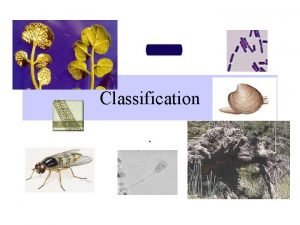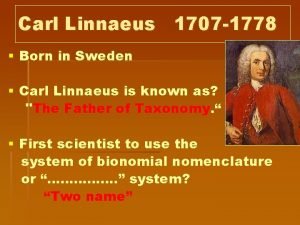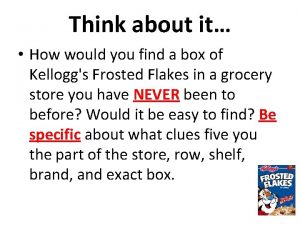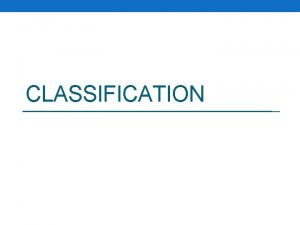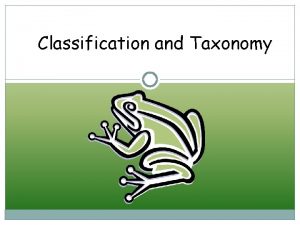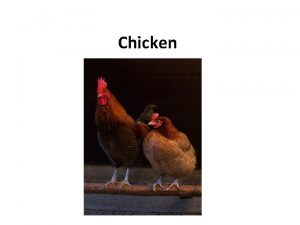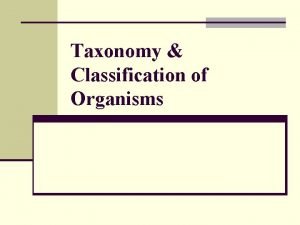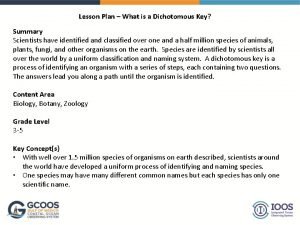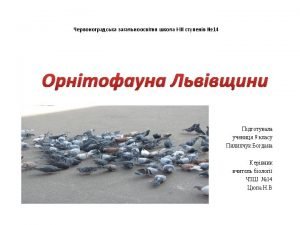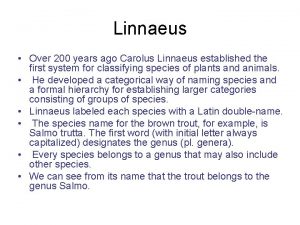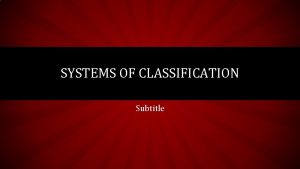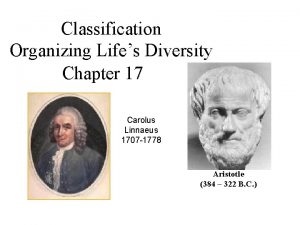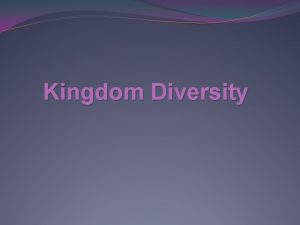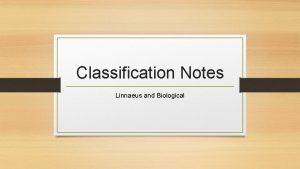Unit 6 Classification and Diversity Linnaeus classification system









- Slides: 9

Unit 6: Classification and Diversity Linnaeus’ classification system has seven levels. • Each level is included in the level above it. • Levels get increasingly specific from kingdom to species.

Unit 6: Classification and Diversity • Physical similarities are not always the result of close relationships. • Genetic similarities more accurately show evolutionary relationships.

Unit 6: Classification and Diversity KEY CONCEPT Modern classification is based on evolutionary relationships.

Unit 6: Classification and Diversity Cladistics is classification based on common ancestry. • Phylogeny is the evolutionary history for a group of species. – evidence from living species, fossil record, and molecular data – shown with branching tree diagrams

Unit 6: Classification and Diversity • Cladistics is a common method to make evolutionary trees. – classification based on common ancestry – species placed in order that they descended from common ancestor

Unit 6: Classification and Diversity • A cladogram is an evolutionary tree made using cladistics. – A clade is a group of species that shares a common ancestor. – Each species in a clade shares some traits with the ancestor. – Each species in a clade has traits that have changed.

Unit 6: Classification and Diversity • Derived characters are traits shared in different degrees by clade members. 1 Tetrapoda clade – basis of arranging species in cladogram – more closely related species share more derived characters – represented on cladogram as hash marks 2 Amniota clade 3 Reptilia clade 4 Diapsida clade 5 Archosauria clade FEATHERS & TOOTHLESS BEAKS. SKULL OPENINGS IN FRONT OF THE EYE & IN THE JAW OPENING IN THE SIDE OF THE SKULL OPENINGS BEHIND THE EYE EMBRYO PROTECTED BY AMNIOTIC FLUID FOUR LIMBS WITH DIGITS DERIVED CHARACTER

Unit 6: Classification and Diversity • Nodes represent the most recent common ancestor of a clade. CLADE 1 Tetrapoda clade 2 Amniota clade 3 Reptilia clade • Clades can be identified by snipping a branch under a node. 4 Diapsida clade 5 Archosauria clade FEATHERS AND TOOTHLESS BEAKS. SKULL OPENINGS IN FRONT OF THE EYE AND IN THE JAW OPENING IN THE SIDE OF THE SKULL OPENINGS BEHIND THE EYE EMBRYO PROTECTED BY AMNIOTIC FLUID NODE FOUR LIMBS WITH DIGITS DERIVED CHARACTER

Unit 6: Classification and Diversity Molecular evidence reveals species’ relatedness. • Molecular data may confirm classification based on physical similarities. • Molecular data may lead scientists to propose a new classification. • DNA is usually given the last word by scientists.
